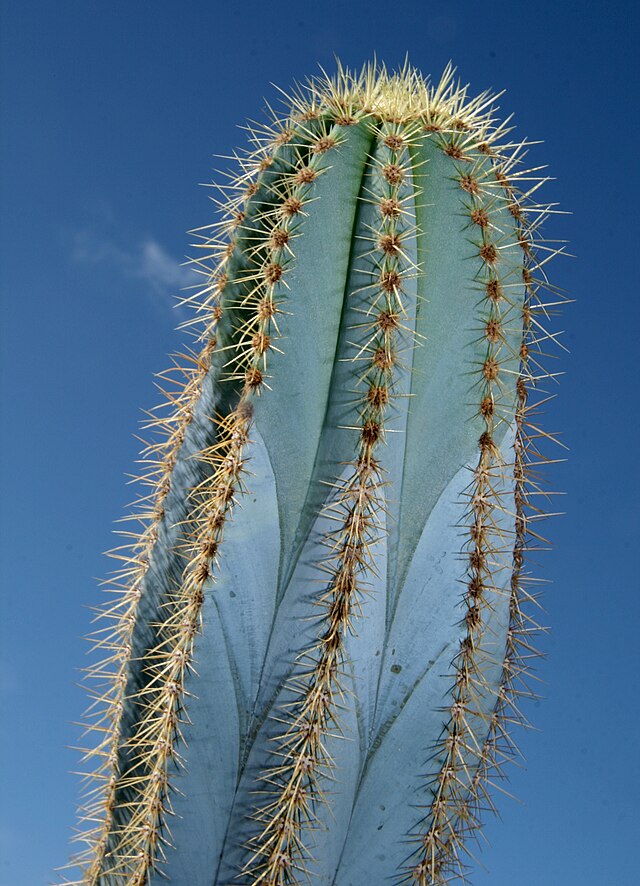Pilosocereus magnificus seeds
Accepted Scientific Name:
Pilosocereus magnificus
Synonyms:
Pseudopilocereus magnificus
Common Names:
Often called “Facheiro” in Brazil and commonly referred to as a Blue Brazilian Torch Cactus or simply Blue Columnar Cactus.
Plant Origin:
Pilosocereus magnificus seeds
Pilosocereus magnificus
Native to Brasil’s arid interior, Pilosocereus magnificus grows in small trees or clumping columns. When mature, it can reach 1.5–5 m tall, forming a clear trunk and multiple erect, smooth stems, each 4–7.5 cm wide. Its most distinctive feature is a persistent glaucous blue-green epidermis, which remains vivid even under intense sun—earning it a place among the most visually striking Pilosocereus species.
Ribs & Spines
Each stem sports 5–12 ribs, marked by subtle transverse grooves near the apex. Areoles are spaced along these ribs, often grouped, and outfitted with golden-yellow to amber radial spines (up to 10 mm) plus 8 central spines reaching 1.5 cm long, giving the plant a radiant contrasting armament.
Flowers & Fruits
In spring and summer, tubular night-blooming flowers (~6 cm long, 2.3 cm wide) emerge from the cephalium zone atop mature stems. These blossoms give way to globose fruits (2.5–3.5 cm), splitting to reveal vivid magenta flesh studded with black seeds—a treat for wildlife .
Growing from Seed
Cultivating P. magnificus from seed is gratifying yet requires patience and conditions mimicking its natural habitat:
Substrate: Use a coarse, fast-draining mix—equal parts cactus potting soil, pumice, and sharp sand.
Conditions: Maintain a warm environment (22–28 °C / 72–82 °F) with bright, indirect light.
Humidity: Cover with clear plastic or dome until seedlings sprout in 2–4 weeks.
Aftercare: Harden off gradually; increase light and airflow as they grow.
Watering: Water thoroughly during growth, allow the substrate to dry fully before re-watering.
Fertilizer: Once yearly in early spring with a cactus-specific formula is sufficient .
Temperature & Water Management
-
Temperature: Thrives in 70–95 °F (21–35 °C) during active growth. It can briefly endure down to ~30 °F (−1 °C), but prolonged frost exposure can cause tissue damage .
-
Watering: Weekly in summer; bi‑weekly in spring. Withhold water in autumn and winter to avoid root rot consultaplantas.com.
Why Grow P. magnificus?
-
Striking blue-glaucous stem and contrasting golden spines make it a focal point in desert and succulent gardens.
-
Adapted to harsh climates—ideal for xeriscaping in hot, arid regions.
-
Towering form: impressive vertical structure even in containers.
-
Wildlife-friendly: nocturnal flowers and fruit appeal to pollinators and birds.
-
Conservation: Listed as Endangered by IUCN, cultivating from seed helps buffer wild population decline
